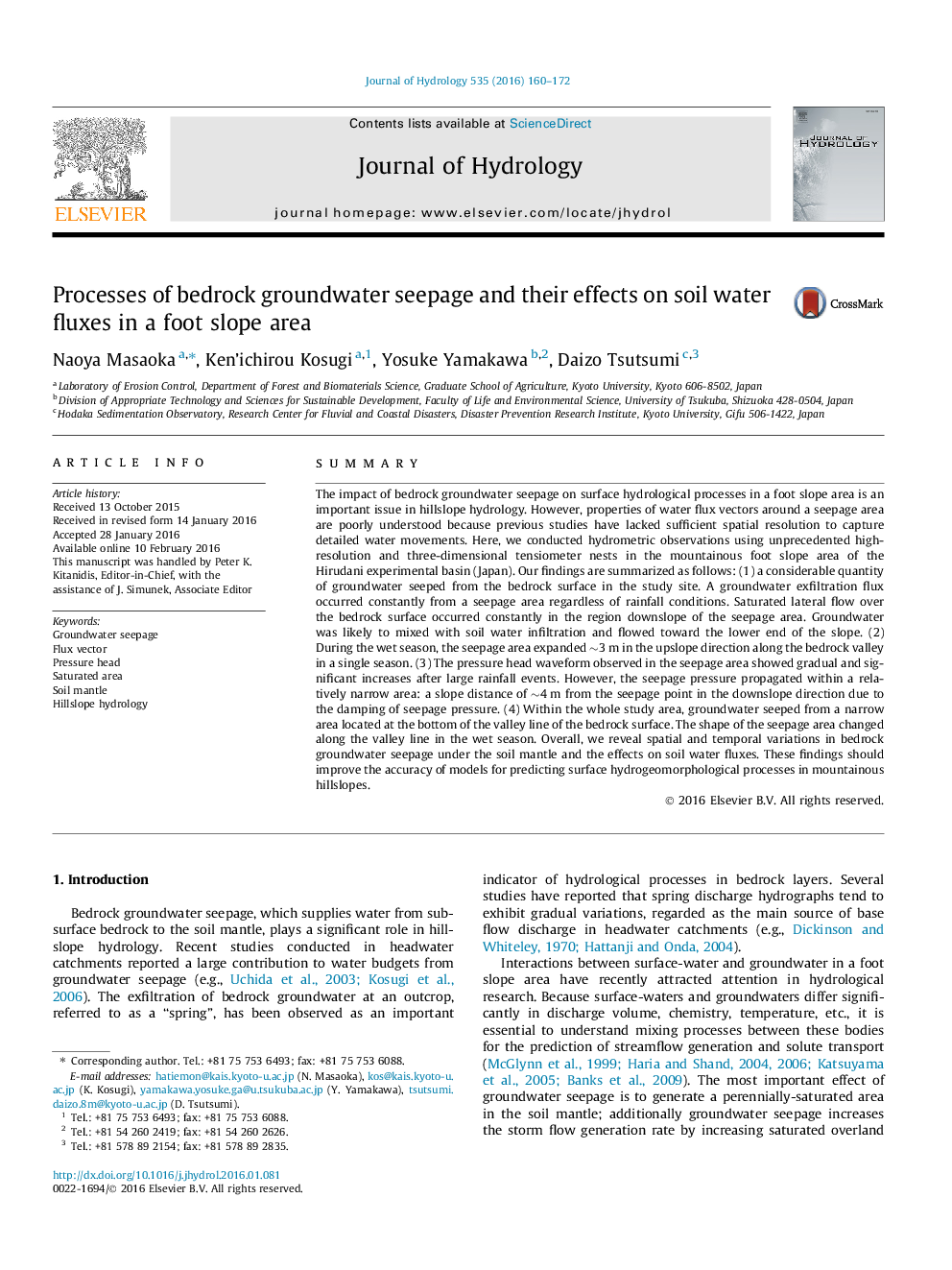| Article ID | Journal | Published Year | Pages | File Type |
|---|---|---|---|---|
| 6410093 | Journal of Hydrology | 2016 | 13 Pages |
â¢We observed water flux vectors using unprecedented high-resolution tensiometer nests.â¢Groundwater seepage constantly generated exfiltration fluxes in the soil mantle regardless of rainfall.â¢The area of groundwater seepage expanded upslope along the bedrock valley during the wet season.â¢The pressure head in the seepage area showed gradual and significant variations.â¢The seepage area was located at the bottom of the valley line of the bedrock surface.
SummaryThe impact of bedrock groundwater seepage on surface hydrological processes in a foot slope area is an important issue in hillslope hydrology. However, properties of water flux vectors around a seepage area are poorly understood because previous studies have lacked sufficient spatial resolution to capture detailed water movements. Here, we conducted hydrometric observations using unprecedented high-resolution and three-dimensional tensiometer nests in the mountainous foot slope area of the Hirudani experimental basin (Japan). Our findings are summarized as follows: (1) a considerable quantity of groundwater seeped from the bedrock surface in the study site. A groundwater exfiltration flux occurred constantly from a seepage area regardless of rainfall conditions. Saturated lateral flow over the bedrock surface occurred constantly in the region downslope of the seepage area. Groundwater was likely to mixed with soil water infiltration and flowed toward the lower end of the slope. (2) During the wet season, the seepage area expanded â¼3Â m in the upslope direction along the bedrock valley in a single season. (3) The pressure head waveform observed in the seepage area showed gradual and significant increases after large rainfall events. However, the seepage pressure propagated within a relatively narrow area: a slope distance of â¼4Â m from the seepage point in the downslope direction due to the damping of seepage pressure. (4) Within the whole study area, groundwater seeped from a narrow area located at the bottom of the valley line of the bedrock surface. The shape of the seepage area changed along the valley line in the wet season. Overall, we reveal spatial and temporal variations in bedrock groundwater seepage under the soil mantle and the effects on soil water fluxes. These findings should improve the accuracy of models for predicting surface hydrogeomorphological processes in mountainous hillslopes.
